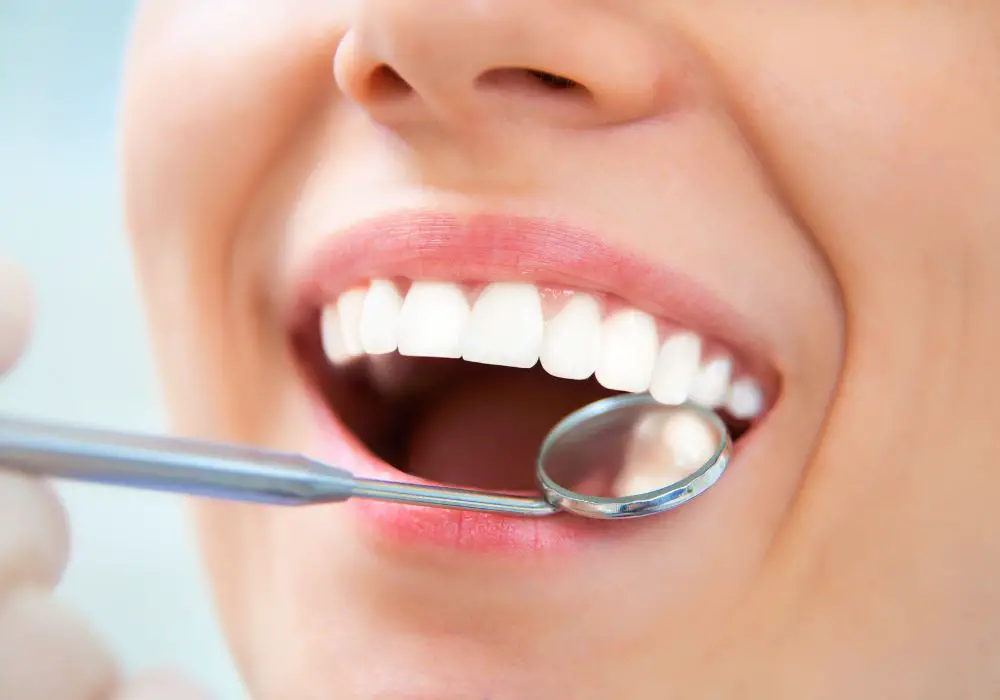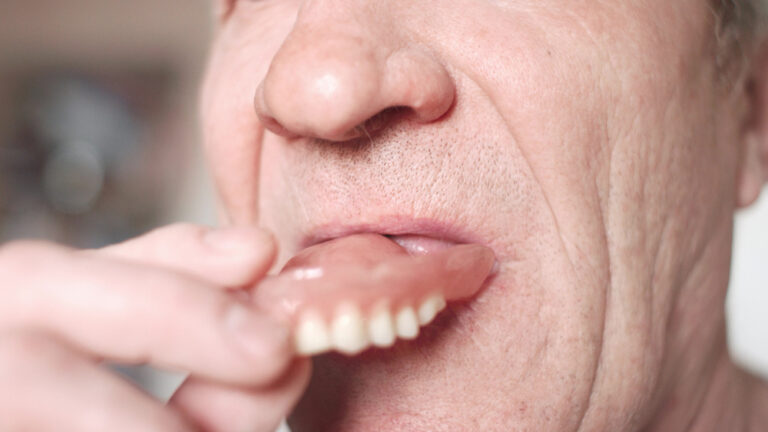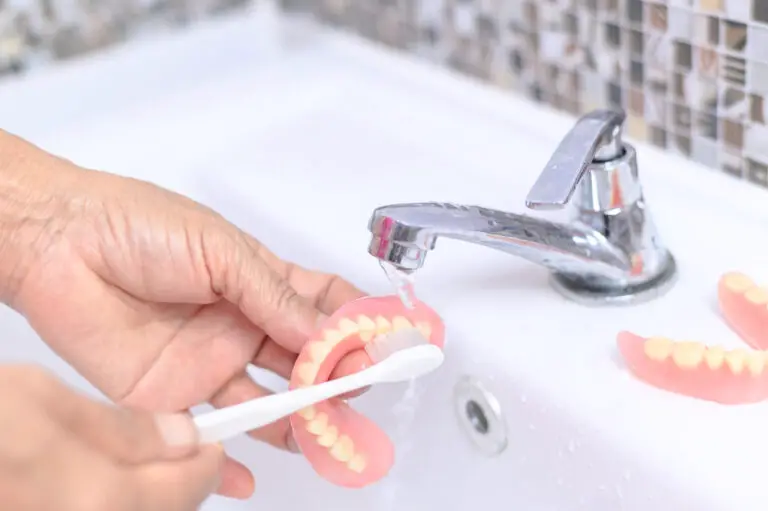What causes teeth to become translucent?
Translucent teeth occur when the outer enamel layer becomes thin or wears away, allowing more of the inner dentin layer to show through. Dentin has a yellowish tone, so when more of it becomes visible, teeth start to look see-through or translucent. The main causes of translucent teeth include:
Enamel erosion
Enamel erosion occurs when acid attacks the tooth surface. Acid can come from:
- Dietary acids like citrus fruits, juices, vinegar, soda, wine, etc.
- Stomach acid from acid reflux or bulimia
- Acidic byproducts from bacteria in the mouth
Over time, enamel erosion can thin the outer layer and make teeth appear more translucent. The teeth may also feel sensitive or look yellowish.
Aging
As we age, enamel naturally starts to wear thin and slowly chip away, exposing more of the dentin underneath. This natural process causes teeth to develop some translucency over time.
Bruxism
Habits like teeth grinding (bruxism) and clenching can wear down tooth enamel. This abrasion causes the enamel to thin and teeth to look see-through along the edges and biting surfaces.
Hypoplasia
This is a condition where tooth enamel is underdeveloped or soft. Hypoplasia can occur if the teeth formed incorrectly during childhood. It creates thin spots in the enamel that give teeth a translucent appearance.
Fluorosis
Getting too much fluoride during childhood can cause fluorosis, which also creates thin, porous areas in tooth enamel. Moderate or severe fluorosis results in patchy translucency.
Whitening treatments
Tooth bleaching/whitening procedures rely on chemicals to penetrate the enamel and alter dentin color. They temporarily make enamel more porous and translucent. But whitening doesn’t permanently thin the enamel.
Can translucent teeth ever go back to normal?

The short answer is — it depends. Here’s a look at the prognosis for translucent teeth under different circumstances:
Enamel erosion
If enamel erosion is caught early before substantial thinning occurs, the process can sometimes be reversed through diligent oral care and the use of enamel-strengthening products like toothpaste for sensitive teeth. However, if the enamel loss is moderate to severe, the translucency cannot be fully reversed. But steps can be taken to prevent further erosion and improve appearance.
Aging
The natural translucency from aging is irreversible. However, its progression can be slowed through conscientious oral hygiene and professional care like dental cleanings and sealants. Porcelain veneers or dental crowns may be recommended to cover severely translucent teeth and restore a more natural appearance.
Bruxism
Stopping the grinding and clenching habits is the first step to preventing further damage. Mouthguards, bite splints, and sometimes medications are used to control bruxism. Any mild translucency from minor enamel loss may improve a bit once the abrasion stops. But severe thinning cannot be reversed.
Hypoplasia
The thin spots caused by enamel hypoplasia cannot go away. But plastic coatings or dental veneers can mask the translucency and improve appearance. Ongoing diligent dental care is important to protect the soft enamel from worsening.
Fluorosis
The patchy translucency from fluorosis only occurs while the teeth are still forming under the gums. Once the teeth erupt, no new fluorosis develops. The white spots and opaque areas that formed cannot be reversed, but they often decrease in visibility with age as the outer enamel becomes more mineralized. In moderate-severe cases, cosmetic treatments like veneers may be an option to hide the fluorosis.
Whitening treatments
The temporary increase in translucency that accompanies bleaching procedures reverses once the whitening effect fades. Enamel returns to normal thickness and appearance within a few months. Whitening may be repeated once or twice a year as desired.
How can I prevent further enamel thinning and translucency?

While enamel loss cannot be completely reversed in most cases, the following habits can help slow the progression and prevent excessive thinning in the future:
- Use a soft-bristle toothbrush and avoid aggressive brushing
- Choose non-abrasive toothpastes
- Brush with a fluoride toothpaste
- Rinse with water after acidic foods and drinks
- Drink acidic drinks through a straw
- Avoid chewing on hard items like ice or pens
- See a dentist regularly for exams and cleanings
- Get help controlling bruxism if needed
- Use an enamel-strengthening toothpaste containing ingredients like hydroxyapatite or stannous fluoride
- Apply dental sealants to protect susceptible teeth
- Consider dental veneers or crowns if appearance is a major concern
What treatments can improve the appearance of translucent teeth?
Several cosmetic dentistry options exist to mask translucency and restore a more natural, opaque look to teeth. Options include:
Dental veneers
Veneers are thin shells made of porcelain or composite resin that adhere to the front of teeth. By covering the entire tooth surface, veneers can fully hide translucency, stains, chips, gaps, and other flaws. However, some natural tooth must be removed to accommodate their thickness. Veneers last many years with proper care.
Dental crowns
Crowns are tooth-shaped caps that surround an entire tooth down to the gum line. Like veneers, crowns can conceal severe translucency, discoloration, and other defects. They require more natural tooth reduction than veneers but offer greater durability, lasting a decade or longer.
Dental bonding
Bonding applies tooth-colored composite resin directly onto the tooth surface. It can hide minor translucency or small damaged areas. Bonding is an affordable option for mild cases but doesn’t last as long as veneers or crowns.
Enamel microabrasion
This polishes away outer enamel to improve appearance. It removes thin translucency and slight stains, especially from fluorosis. Results are subtle and the procedure may need to be repeated, but it conserves more natural tooth.
Dental implants
If translucent teeth also have significant structural damage, extracting them and replacing them with dental implants may be the best solution. Implants consist of a titanium screw fused to the jawbone, topped with a realistic ceramic crown. Implants look and function like natural teeth.
How much do treatments for translucent teeth cost?

The cost of treatment depends on the specific procedure and how many teeth need improvement. Estimated costs are:
- Dental bonding: $100-$300 per tooth
- Enamel microabrasion: $150-$400 per tooth
- Veneers: $925-$2500 per tooth
- Crowns: $800-$3000 per tooth
- Dental implants: $1000-$3000 per implant
Many dental insurance plans cover a portion of these costs. Payment plans or financing options are also available to help spread out treatment costs over time.
Frequently Asked Questions
Can teeth become less translucent over time on their own?
Not usually. Translucency from enamel loss is permanent in most cases. A few exceptions are temporary translucency from whitening treatments and fluorosis, which may lessen slightly with age. But significant enamel thinning cannot reverse or improve on its own without treatment.
Does brushing too hard cause translucent teeth?
Yes, aggressive brushing over time can wear down enamel and make teeth appear more see-through. Using a soft-bristle brush and gentle brushing technique helps prevent enamel abrasion.
Are translucent teeth weaker?
Thinned enamel is weaker and more prone to cavities and fractures. The inner dentin layer that shows through is also softer than enamel and wears down faster. Ongoing dental care and treatment to cover thin spots helps prevent further weakness.
Can you get veneers or crowns on translucent teeth?
Yes, veneers and crowns are excellent options for concealing translucency and strengthening weakened teeth. They do require some removal of natural tooth structure, but then fully cover the surface with an opaque material that looks natural.
Do whitening strips make teeth more translucent?
Whitening strips create temporary increased translucency while the products are actively bleaching the teeth. Enamel returns to normal thickness once you stop using the strips. Extended overuse may cause lasting enamel changes, so moderation is important.
Conclusion
In most cases, significant enamel thinning and translucency cannot be reversed to normal opacity. But diligent oral hygiene and professional treatments can often prevent the problem from worsening over time. Cosmetic procedures like veneers, crowns, and bonding offer excellent ways to conceal translucency and give teeth a more even, natural-looking appearance. While translucent teeth cannot go completely back to normal, their look and function can still be improved.







